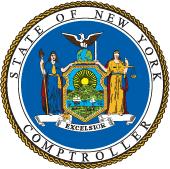Annual Performance Report on New York State’s Industrial Development Agencies - Fiscal Year Ending 2015, March 2017
In 2015, the State’s 109 active Industrial Development Agencies reported projects valued at $88.7 billion, with nearly $700 million in net annual tax exemptions and $11.4 billion in total debt outstanding, including conduit and other debt. They supported 4,484 projects that had created 224,734 jobs from their inception through 2015.
